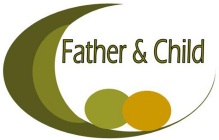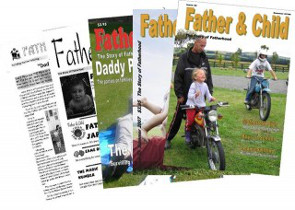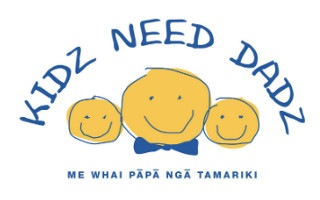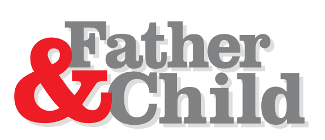The Montessori Model
As Montessori-based education turns 100, Brendon Smith visits one Montessori pre-school in west Auckland to find out just what makes them different.

For whatever reason, more New Zealand children are attending childcare centres than ever before. More of them are under two years old, some are attending up to and over 40 hours a week and there is now a wide variety of early learning, day-care, kindergartens and play-centres to choose from.
The parental decisions on type of centre or hours will also vary greatly.
For many, time and money will be the primary drivers; parents need to work or childcare centres need to return a profit. For some, productivity is the key, this is why the government promised twenty hours for 3-4 year olds. In other cases, location or prestige may be factors in searching for the best combination.
Certainly, with pressures piling on from all directions, childcare is becoming more a commodity than a community service. The concepts of what is best for the child, quality, focus or the balance of home and centre based learning are no longer as important. Like any work problem, child care is to be managed, solved efficiently if possible, let convenience and balance sheets prevail..
We have drifted a long way from the origin of early childhood education. However, within our community there are some totally child focused, simply principled preschools which aim for and achieve such honourable goals as ‘whole of child’ development and enjoyment of learning.
Father and Child Trust were alerted to such ideas when a fabulous article was sent to us, showing the ‘discovery of dinosaur bones’ in a sandpit at a preschool near Kumeu in West Auckland.
With the enthusiasm and imagination of the staff, such projects are possible anywhere, but what we admired was that the archaeological dig was part of a broader study of the Jurassic (?) period conducted over several months and including all aspects of the earth’s flora and fauna from that period.
By the time we rang to investigate, the centre was well into another major topic, knights of the middle ages, complete with jousting contests and fair maidens to be impressed.
How could one preschool develop and maintain such an interesting curriculum? What was their driving motivation and how did they manage to keep things so interesting for the children?
In a word, Montessori is the answer.
Eva Nicoletatos currently owns the Kumeu Montessori Preschool and runs it by the Montessori principles, with elements of her Complementary Medicine, anthropology and psychoneuro-immunology (PNI), or body-mind connection qualifications.
Celebrating their centenary on January 6th this year, Montessori worldwide are reaffirming the founding doctrine of Dr Maria Montessori, a visionary who observed, wrote and practised simple, holistic teaching patterns which are still resulting in more capable children worldwide.*
The Montessori system is more than a curriculum, designed to complement a healthy home learning environment, it begins with a selection of fundamental lessons, simple models and tools.
The first, phonetics language breakdown, was pioneered by Montessori, along with the famous sandpaper letters for tactile connection. Lessons are delivered with minimal input from teachers, indirectly encouraging children to educate themselves.
Teachers also model the behaviour required, emphasising empathy, tolerance and caring for not only fellow children, but for their environment and community. Manners, like not interrupting, are considered part of good communication, while many lesson instructions are carefully worded.
Praise is used sparingly, as task completion or a final result should be enough reward for the child. Their ownership of the challenge or activity gives them focus and if recognising their mistakes, the opportunity to figure out their own solutions.
This reminds me of how so many parents have such high expectations of themselves as parents or of their offspring, that they worry or implore too much.
Montessori empowers the child, with their parents and environment hopefully sharing and lightening the parenting burden.
Within specially prepared environments, resources are selected to suit the ability of the children. Equipment is valued and respect is required, yet independent goal setting is always encouraged.
Work cycle management, with easy starts, content in sequence then pack down or tidy up, is maintained for every lesson. Expectations of boys and girls are equally high as Montessori believes both can easily achieve fine motor and social skills at similar levels.
Audio, visual and kinaesthetic, hands-on learning methods are deployed to cater for all learning styles. Perceptions of size, space, texture, colour and sound are taught, one aspect at a time.
Cylinder blocks, binomial and trinomial cubes, which Montessori invented, are still in daily use, along with sound introductions to things like geometry, languages and maths.
Eva insists on weekly French lessons, knowing that multi-lingual work early in life allows for the brain to develop higher learning abilities.
Jazz dancing and yoga are included, while breathing is one fundamental no Kumeu Montessori kid is likely to need help with, as regular diaphragmatic breathing practice is part of their whole life training.
Some of the better known methods have no doubt been used in other childcare centres worldwide. However, knowing that the ‘Montessori Way’ is based on growing confident, self motivated kids with an established, lifelong love of learning, should be enough to sway those pressured parents looking for an ultimate fix.
Even so as principles like trust, independence and respect are required in their community and home lives, it seems good parents will still be needed to raise those perfect, wonder children!
*Science magazine recently published research proving that 5 year olds with Montessori education were significantly better prepared for elementary school and further ahead for their age in executive function, both socially and academically.
Next: Running Like Dad




